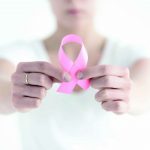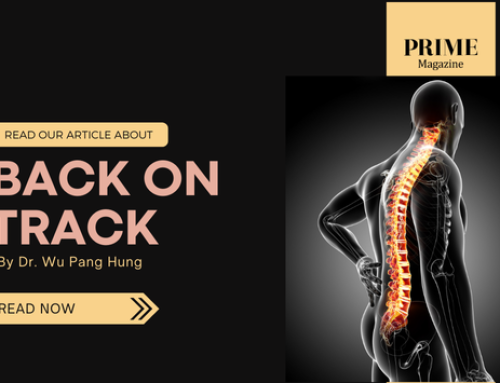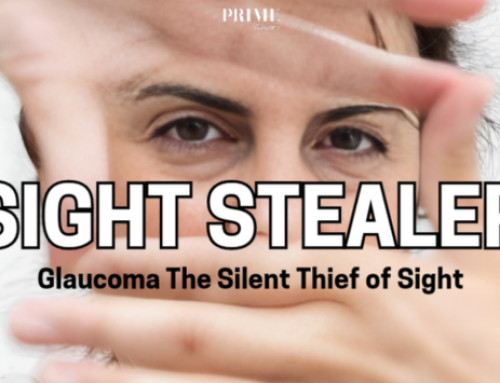Red Face
The Dangers of “Asian Flush” Syndrome

Many of us are familiar with or may have even experienced our faces turning flushed or red after drinking alcohol. Yet, most of us are unaware that this symptom is linked to a higher risk of many alcohol-related cancers.
Alcohol consumption is rising in many developing countries. Globally, alcohol causes around three million deaths a year, including over 400,000 from cancer. There is very strong evidence to indicate that alcohol has a direct causal relationship with cancers of the head, neck, oesophagus, liver, colon and breast. In 2007, the International Agency for Research on Cancer from the World Health Organisation concluded that ethanol is carcinogenic to humans. It was classified as a Group 1 carcinogen because there is sufficient evidence to conclude that the consumption of alcoholic beverages causes cancer in humans.
Recent studies have shown a rise in alcohol consumption during the COVID-19 pandemic, especially among heavy drinkers. The rise became even higher when the lockdown period was prolonged. During the pandemic, alcohol was used by some people as a coping strategy for depression, anxiety, stress or boredom. There was a further rebound in alcohol consumption when COVID-19 restrictions were lifted. Beyond the pandemic, alcohol consumption also generally rises during the seasonal holiday periods, such as Christmas, New Year and Chinese New Year, as well as during celebratory events like birthday parties.
Going Red in the Face
Alcohol (or ethanol) is metabolised predominantly in the liver by alcohol dehydrogenase (ADH) to form the toxic substance acetaldehyde (AA). This is, in turn, quickly metabolised by aldehyde dehydrogenase 2 (ALDH2) to form acetate, a less active byproduct (See Figure 1).


Figure 1: Ethanol (Alcohol) Metabolic Pathway
A common hereditary enzyme deficiency affecting about 35% of East Asians (especially Chinese) and about 8% of the world population is a genetic mutation of the ADH and ALDH2 enzymes. In general, two genetic mutations of these enzymes can lead to the toxic accumulation of AA in the blood. The first mutation leads to the loss of metabolic activity by the enzyme ALDH2, while the other results in an increase in the metabolic activity of ADH. The combined effect of these changes is the accumulation of AA – a known carcinogen – to toxic levels (See Figure 1).
People with either of these mutations have poor alcohol tolerance. When they drink alcohol, they will exhibit symptoms like redness in the face, tachycardia, nausea and headaches. As these mutations are extremely rare in European populations and more common among East Asians, this physiological response of reddening of the face became popularly known as the “Asian Flush”. “Asian Flush” symptoms may be reduced later in life, especially if the individual continues to drink alcohol and his/her body adapts to alcohol. However, the damage caused by the accumulation of AA from alcohol consumption remains a serious health risk.
Accumulation of AA
Some individuals are homozygous for ALDH2 (i.e., they carry two copies of the mutated gene), which results in extremely low ALDH2 activity in their livers. For these individuals, they are unable to tolerate alcohol at all. They develop severe flushing, tachycardia, nausea and headaches upon any alcohol consumption. Thus, these individuals are unlikely to develop alcoholism due to the severity of their response to alcohol.
On the other hand, there are people who are heterozygous for ALDH2 (i.e., they carry only one copy of the mutated gene). These people have reduced enzyme activity, but they can still tolerate alcohol ingestion. As a result, some of them may become heavy drinkers or alcoholics. These individuals have significantly elevated AA levels in their saliva, even if they only took a moderate dose of alcohol. The AA levels in their saliva can be nine times higher than that in their blood. This suggests that reduced ALDH2 activity in the salivary glands can lead to AA accumulation in the saliva.

Whenever these individuals drink alcohol, they are exposed to extremely high concentrations of AA in their saliva. High levels of AA in the saliva are commonly associated with a marked increase in cancer risk. Beyond reduced ALDH2 activity in the salivary glands, AA is also produced from ethanol by bacterial oxidation in the mouth, throat, oesophagus and colon. This is another major source of AA in the saliva and, by extension, the oesophagus. In fact, AA levels in the saliva can be 10-20 times higher than that in the blood due to the local formation of AA by oral bacteria. Similarly, bacteria in the colon are also able to metabolise ethanol to AA. Hence, alcohol consumption can also lead to a higher risk of developing colon and rectal cancer.
AA is highly toxic, mutagenic and carcinogenic. It interferes with DNA synthesis and repair, and can result in cancer development at various sites in the body. It induces inflammation and changes in the lining of the gut, while enhancing cell injury in the upper airway, oesophagus and colon. When inhaled, AA can cause nose, throat and laryngeal cancer.
Oesophageal Cancer and Alcohol
Oesophageal cancer (EC) or cancer of the gullet is the 8th most common cancer and the 6th leading cause of cancer death worldwide. It is associated with a very poor prognosis. About half a million new EC cases occur annually worldwide, and 75% of these are in Asia.
In Asia, 90% of EC cases are due to oesophageal squamous cell carcinoma (ESCC). ESCC arises from long-standing irritation (and inflammation) of the oesophageal lining, most commonly due to smoking and chronic alcohol abuse. Men are two times more likely to get ESCC than women, and the disease tends to occur after the age of 50 years. In Singapore, EC is the 10th most frequent cause of cancer death in men.
While alcohol consumption at any level is associated with an increased risk of ESCC, heavy alcohol consumption is associated with a very high risk of ESCC for people who experience the “Asian Flush”. These ALDH2-deficient individuals are about eight times more likely to develop ESCC from alcohol consumption; the risk can range from 1.3-fold higher for light drinkers to 10-fold higher for heavy drinkers. One study estimated that 53% of ESCC might be prevented in the Japanese male population if moderate or heavy drinking ALDH2 deficient individuals were only light drinkers.
In addition, several epidemiological studies have reported that the risk of alcohol-associated cancers is significantly elevated in people with low ALDH2 activity. They have 10 times increased risk of developing mouth, throat, upper airway cancer, and ESCC. In addition, they also have a 50-fold higher risk of developing a second cancer at another site of the oesophagus if they continue drinking alcohol. The risk of colon cancer is increased by three times in these individuals.
“Asian Flush” as a Clinical Biomarker
“Asian Flush” – the characteristic redness of the face as part of an alcohol-flushing response – can be used as a visible clinical biomarker for ALDH2 deficiency. Clinicians can determine ALDH2 deficiency simply by asking about previous episodes of alcohol-induced flushing. Those who are identified as ALDH2-deficient should be counselled to reduce or stop alcohol consumption, while high-risk patients should be assessed endoscopically (with a gastroscope, and the oesophagus should be carefully studied using white light endoscopy and narrow band imaging) for ESCC. Aoyama et al. recently used the acetaldehyde breath test (ABT) to identify individuals with ALDH2 deficiency with 96% accuracy. The ABT can detect very low levels of AA and alcohol, even in cases where only very small amounts of alcohol were ingested.
Synergistic Reaction of Smoking and Alcohol
The use of tobacco products, including cigarettes, cigars, pipes and chewing tobacco, is a major risk factor for ESCC. The more a person uses tobacco and the longer he/she uses it, the higher his/her cancer risk. Someone who smokes a pack of cigarettes or more a day has at least twice the risk of getting ESCC as compared to a non-smoker. The good news is that this risk does go down for people who quit tobacco.
However, people who drink and smoke raise their risk of ESCC much more than those who use either alcohol or tobacco alone. The synergistic effect of alcohol and tobacco use on ESCC is interesting. Smoking dramatically increases AA levels in the saliva, especially in ALDH2-deficient individuals, who have a reduced capacity to clear salivary AA. As such, worldwide efforts to control the burden of ESCC should focus on individuals who use both alcohol and tobacco.

Higher Risks of Cancers and the “Asian Flush”
Both genetic and epigenetic (non-genetic influence on gene expression) mechanisms are involved in alcohol-induced carcinogenesis of the mouth, throat, stomach, colon, liver and breast, as well as ESCC. However, ALDH2-deficient individuals who are moderate-to-heavy consumers of ethanol have a 10-fold increased risk for ESCC. This makes ALDH2 deficiency the most common hereditary disorder associated with an increased risk of ESCC.

Recent evidence from a large-scale genetic study led by the Oxford Population Health Group confirmed that alcohol consumption causes cancer directly. The team used DNA samples from approximately 150,000 Chinese participants (60,000 men and 90,000 women), and the participants were followed for about 11 years. During this period, 4,500 men (7.4%) developed cancer.
In the Chinese population, the frequency of mutation was 21% for ALDH2 and 69% for ADH (compared with <0.01% and 4% respectively in European populations). Interestingly, men carrying ALDH2 and ADH genetic mutations were strongly linked to reduced alcohol consumption. Men carrying the mutation for ADH drank very little or not at all, and they had a 25% lower risk of overall cancer and alcohol-related cancers. On the other hand, men who carried two copies of mutated gene for ALDH2 drank very little alcohol and consequently, had a 14% lower risk of developing any cancer, and a 31% lower risk of developing alcohol-related cancers.
On the flip side, men who carried only one copy of the mutated ALDH2 gene, and who drank regularly and heavily, had a significantly higher risk of cancer of the head, neck and oesophagus. It is also important to note that men who carried one copy of the mutated gene for ALDH2, and who did not drink or only drank occasionally had no increased cancer risk.
In terms of women, only 2% of the female sample population drank regularly. The study did not find any increased risk of cancer in women with the genetic mutations. This further indicates that the reduced risks for the male carriers of these mutated genes had resulted from their lower alcohol consumption.
Prevention is Better than Cure
Prevention of cancer continues to be one of the most significant public health challenges of the 21st century. It has a key role to play in the fight against cancer. Based on current scientific evidence, at least 40% of all cancer cases could be prevented with effective primary prevention measures (preventing the onset of the disease process), and further mortality can be reduced through early detection of cancer or precancerous lesion (also known as secondary prevention).
As ALDH2 deficiency is a hereditary disorder and the enzyme functions primarily in the liver, ALDH2 deficiency is an ideal target for the application of a viral-mediated liver-directed gene therapy to prevent cancer. This model has been proven to work in mice models.
Recognising the “Asian Flush” as a simple biomarker for ALDH2 deficiency can, in turn, reduce the burden of ESCC. We should especially focus on individuals who use both alcohol and tobacco. In this way, those who become red in the face from alcohol intake will be able to make necessary lifestyle changes to reduce their risk profile of developing alcohol-related cancers. This is a decision that will help to keep them in the pink of health.
Dr Edward Cheong is a senior upper gastrointestinal (GI) surgeon providing a full spectrum of laparoscopic GI, gallbladder and hernia surgery, and endoscopic treatment for early upper GI cancer. He completed his specialist surgical training at The Addenbrooke’s Hospital, Cambridge, UK. In 2008, he completed a prestigious post-CCT surgical fellowship with Prof. JD Luktich
at UPMC, Pittsburgh, USA in minimally invasive oesophagectomy (MIO) and endoscopic treatment for early cancer. Prior to joining PanAsia Surgery, Dr Cheong was senior consultant UGI and laparoscopic surgeon at Norfolk and Norwich University Hospital in the UK. He mentored and trained surgeons in MIO in Argentina, Australia, Ireland, Germany, Netherlands, Singapore, UK and USA. He is also co-director of the Minimally Invasive/Robotic Gastrectomy and Esophagectomy Course at the University Medical Centre Utrecht, Netherlands.
Dr Edward Cheong
BSc (Hons), BMedSci, MB, BCh, BAO (NUI),
MD (UK), FRCS (Eng)
PanAsia Surgery Group
Mount Elizabeth Novena
Specialist Centre
38 Irrawaddy Road #10-43/44
Singapore 329563
+65 6570-2608











